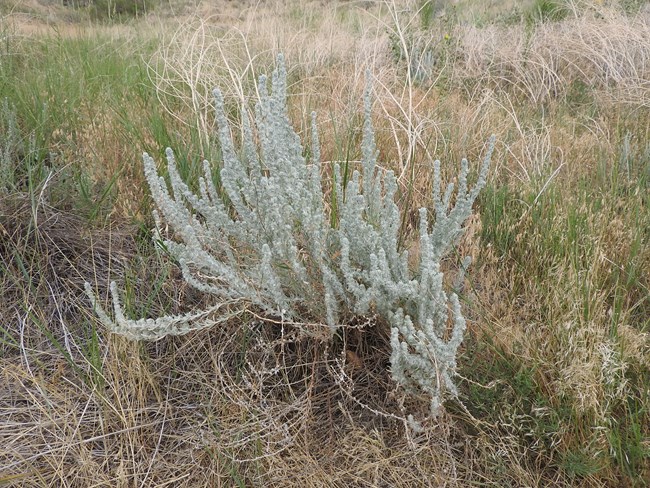Last updated: April 9, 2021
Article
Winterfat

NPS/Eric Grunwald
Winterfat is a long-living shrub that grows to about 3 feet in height. Its leaves are covered with silvery white hairs.Winterfat is well adapted to the dry conditions of the western plains due to its deep and extensive, fibrous root system. Roots can grow to three times the surface growth.
Winterfat grows at elevations of 2,400 to 9.300 feet. At Scotts Bluff National Monument it is fairly common both in the lower plains and up on the summit of Scotts Bluff. Like its name suggests, winterfat is good winter forage for pronghorn, elk, mule deer and many different speicies of small mammals and birds. It's protein content is close to that of alfalfa, which makes this a valuable grazing plant to ranchers.
